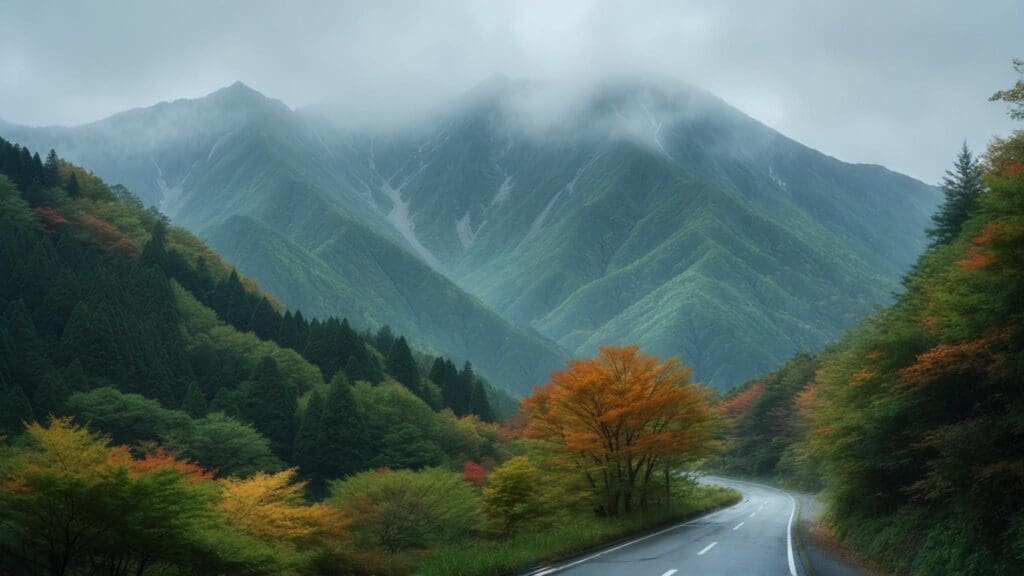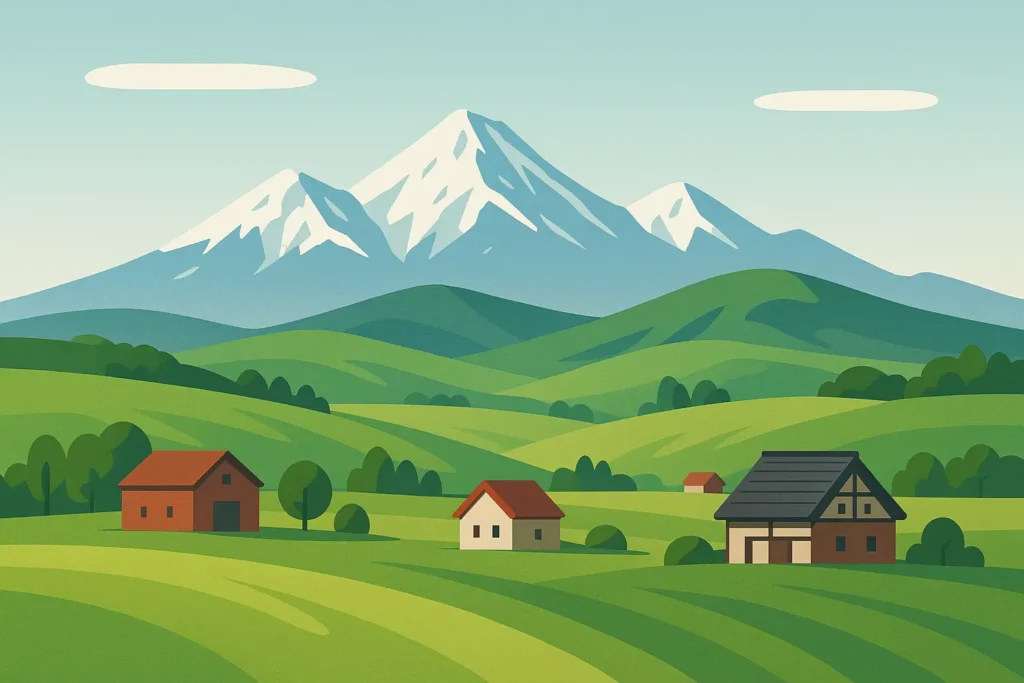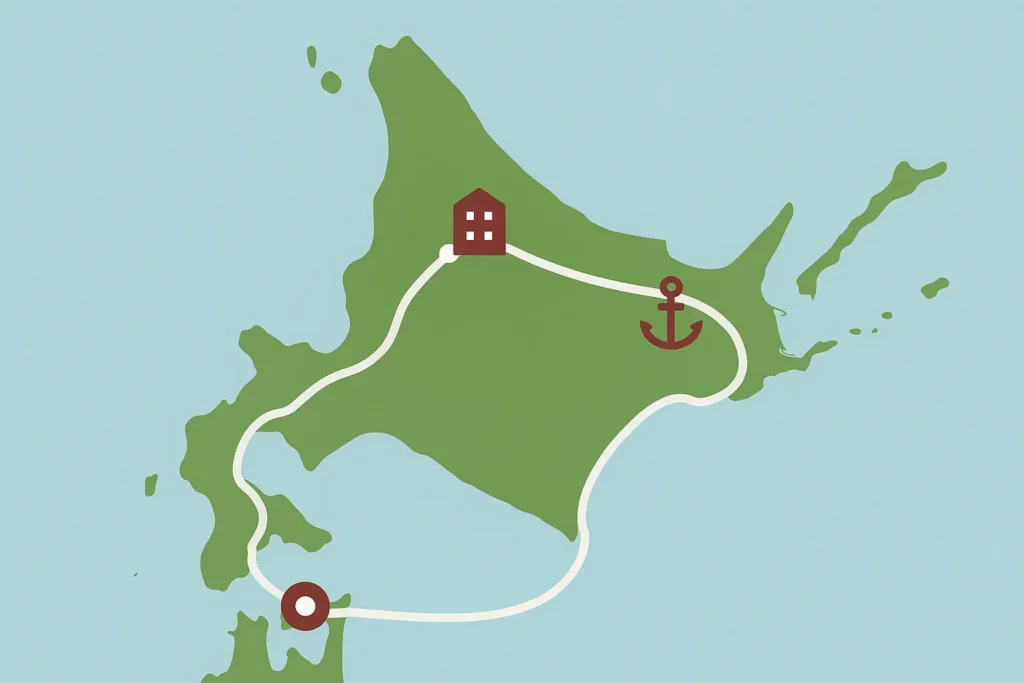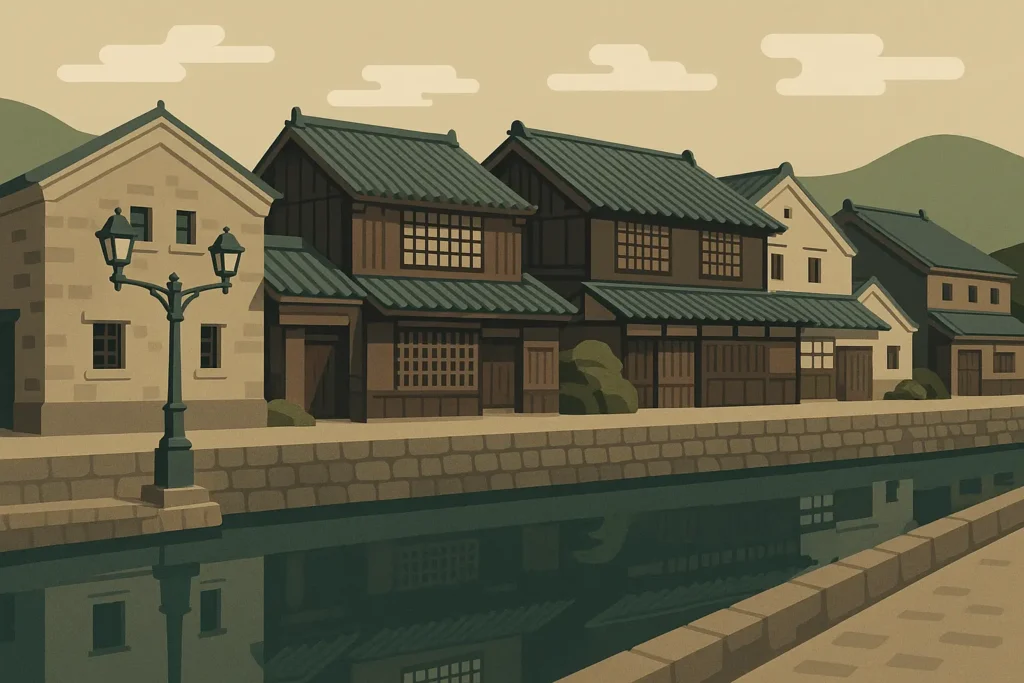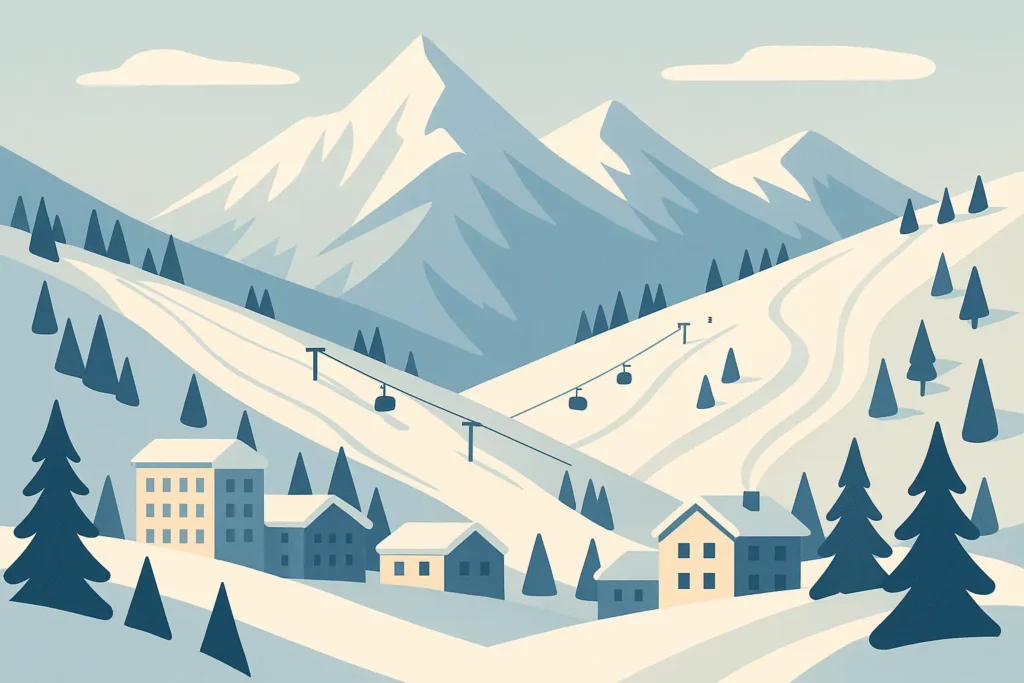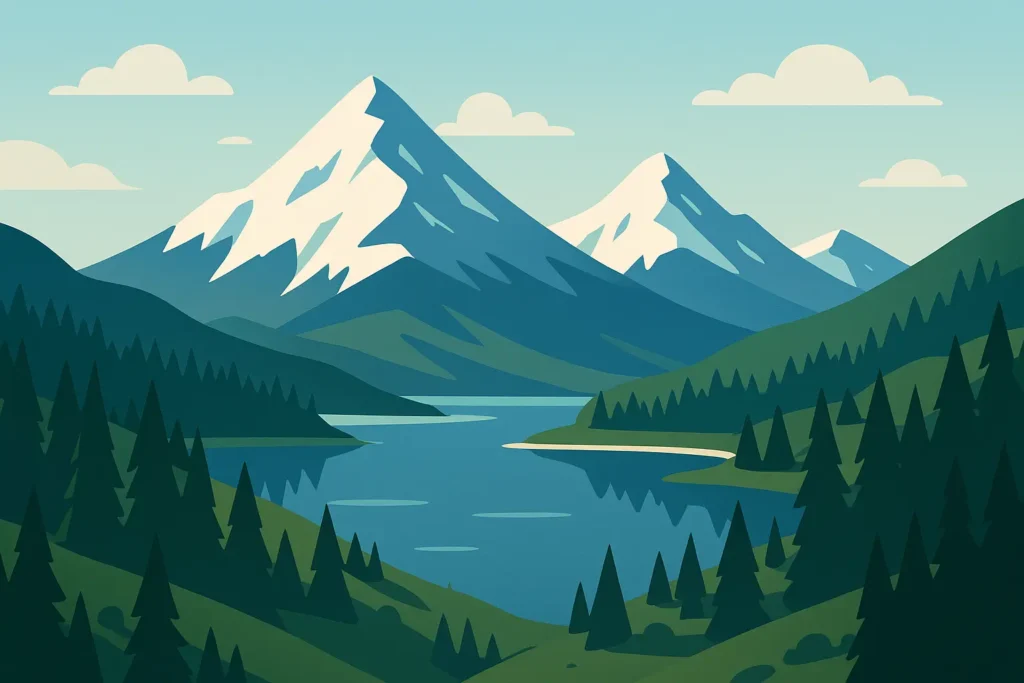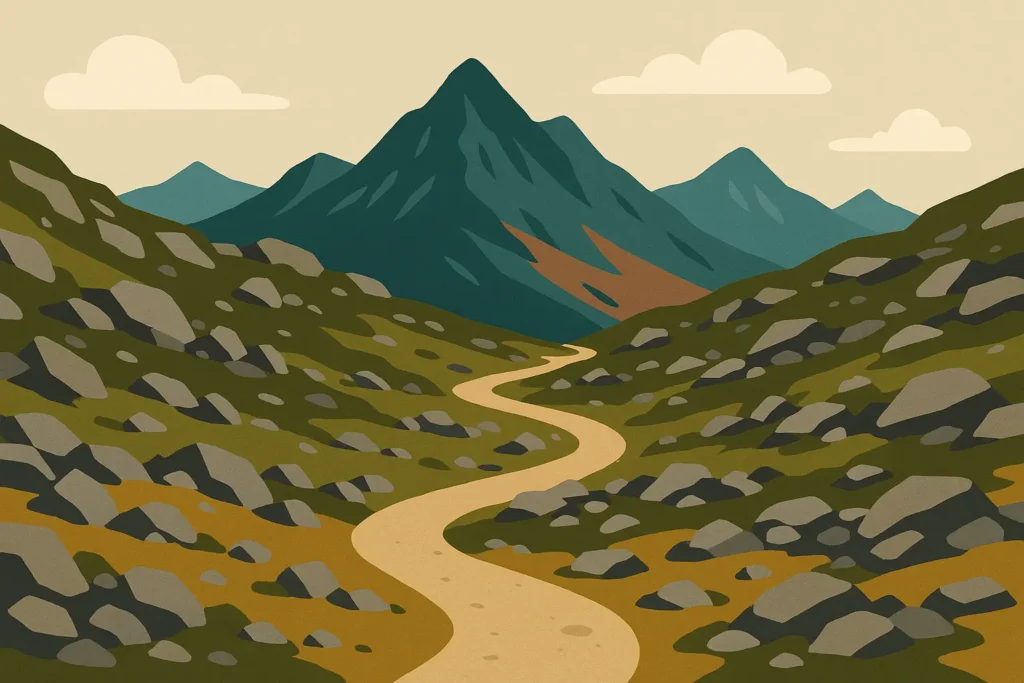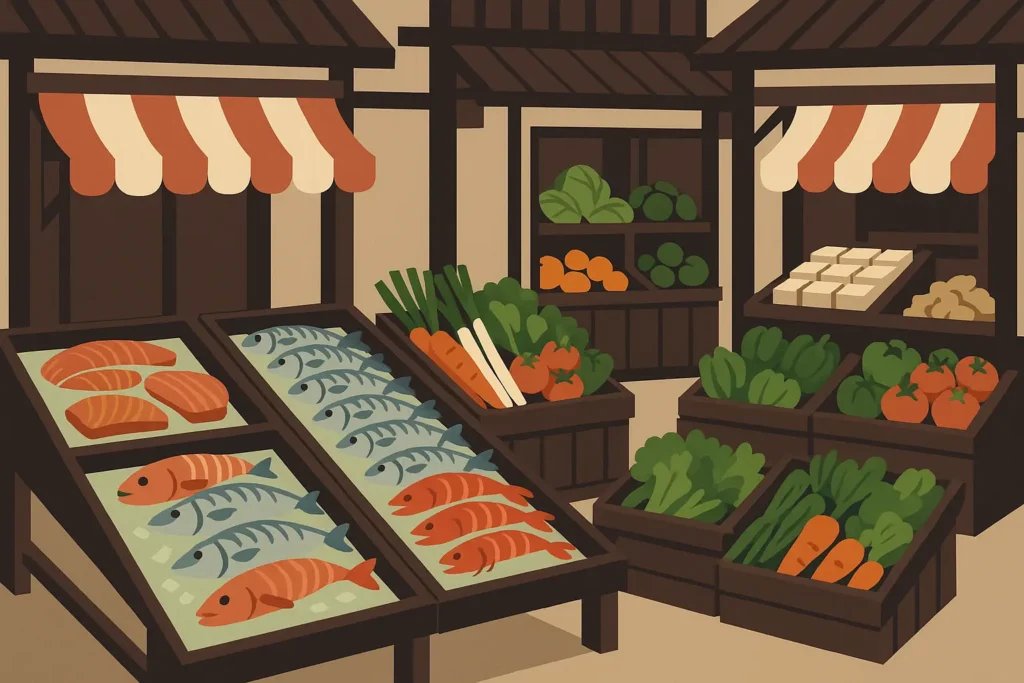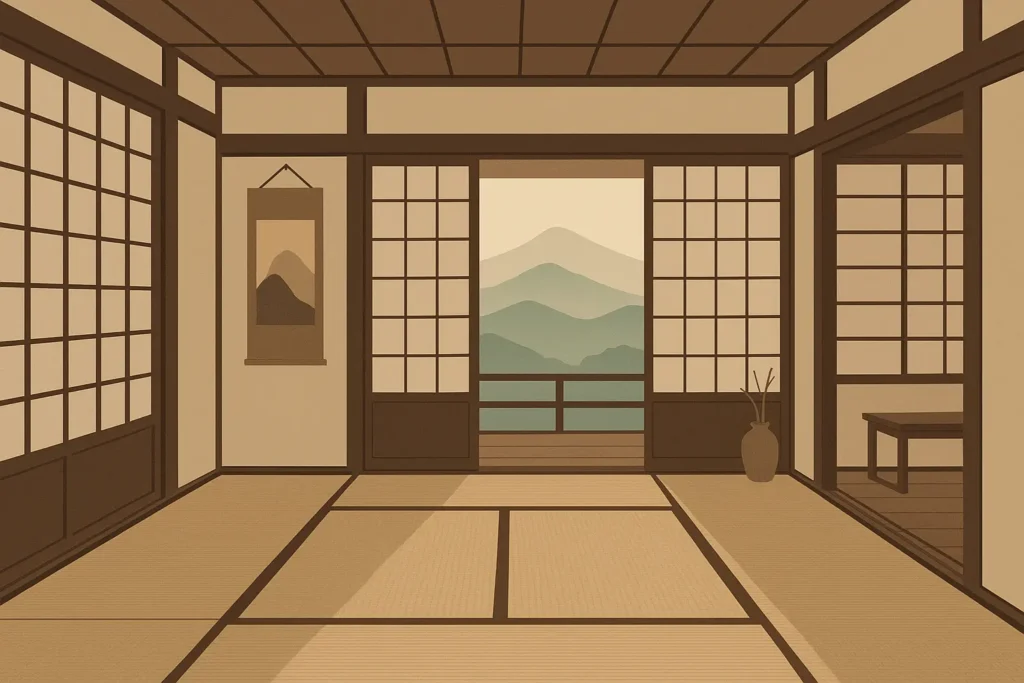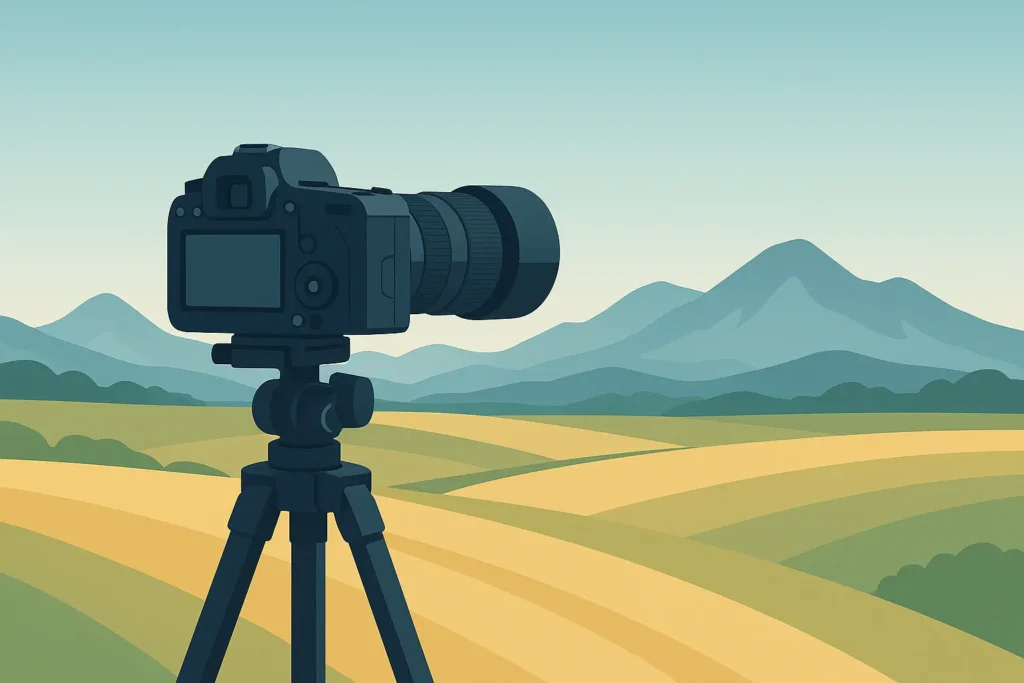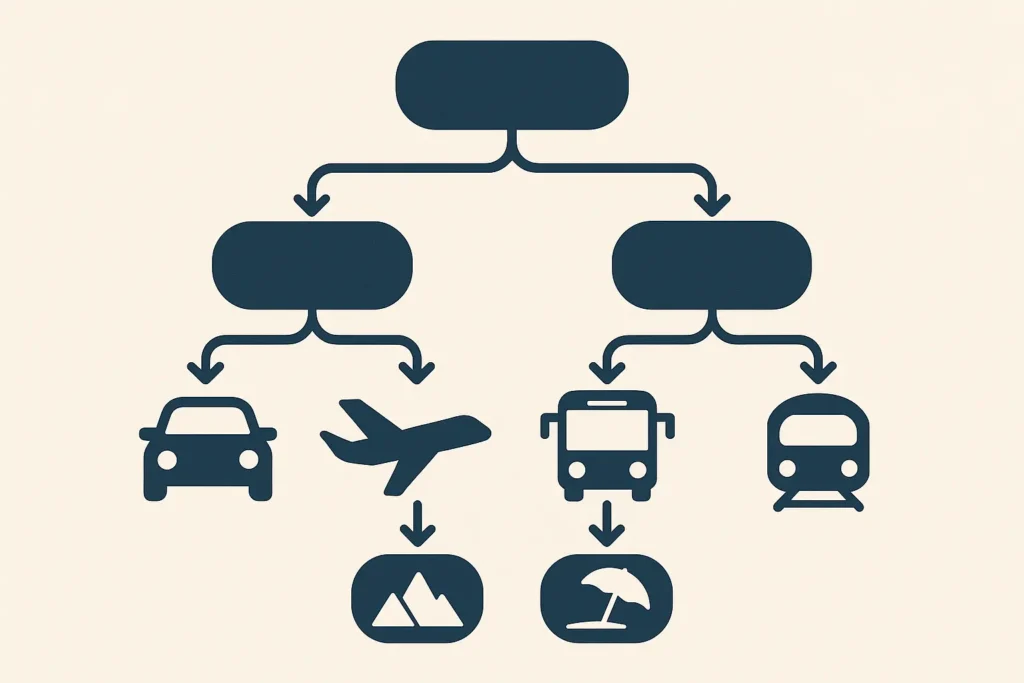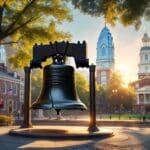Did you know that Hokkaido gets tons of visitors, but here’s the thing most people don’t expect – the weather will mess with your plans no matter how carefully you research those picture-perfect Instagram shots? According to Japan Starts Here, travelers often get hit with reality when those dreamy lavender fields are either not ready yet or already past peak bloom.
I learned this the hard way during my first Hokkaido adventure three summers ago. After months of obsessing over flower field photos, I showed up to five days of gray skies and intermittent rain out of my six-day trip. That experience taught me something crucial: successful Hokkaido travel isn’t about picking perfect destinations – it’s about having backup plans for when Mother Nature laughs at your carefully crafted schedule.
Build flexibility into your plans with our Vacation Planner
Quick Resources:
-
Start stress-free planning with our Vacation Planner
-
Get customized help from our free AI Wedding Planner
-
Find your ideal trip aesthetic using the free Color Analysis Quiz
-
Explore every tool we offer on the Wedding Tools page
Whether you’re dreaming of powder snow adventures, vibrant summer blooms, or authentic cultural experiences, your hokkaido itinerary can make or break your entire Japan trip. I’ve put together 25 itineraries across six different categories, each one designed to help you actually enjoy Hokkaido instead of fighting against its unique challenges and mood swings.
TL;DR
- Hokkaido doesn’t play by mainland Japan rules – distances are huge, weather is unpredictable, and transportation is limited
- First-timers should stick to 1-2 regions max and always have indoor backup plans for when weather ruins outdoor activities
- You’ll need a rental car for nature stuff, but trains work fine for city-hopping
- Winter trips (December-March) have reliable snow but book accommodations way in advance and budget extra for everything
- Summer flower season (mid-July) is gorgeous but insanely crowded – get up at dawn or accept the tourist mob scene
- Budget anywhere from ¥120,000 for basic trips to ¥500,000+ if you want the luxury treatment
- Solo travelers get more flexibility but need to think about safety in remote areas
Planning Your Perfect Hokkaido Adventure
Before we dive into specific itineraries, let me give you the real talk about what makes Hokkaido different. This place is massive (think Austria-sized), barely populated, and has weather mood swings that’ll make your head spin. These aren’t problems you’ll deal with anywhere else in Japan.
Hokkaido japan isn’t your typical Japanese experience. The island only became properly Japanese about 200 years ago, so don’t expect ancient temples everywhere. What you get instead is pristine wilderness and seasonal experiences that’ll blow your mind when they work out.
Seasonal timing controls everything else about your trip. Winter turns Hokkaido into a snow sports paradise with reliable powder from December through March, while summer’s tiny window (really just July-August for the good stuff) gives you those famous flower fields and decent hiking weather.
Match your vibe to the right season with our free Color Analysis Quiz
Key Factors That Actually Matter for Your Trip
Transportation choices will completely change your experience. Trains work great for hitting major cities but leave you stuck with limited schedules for anywhere interesting. Rental cars open up all the remote national parks and scenic drives, but you better be comfortable navigating mountain roads and potentially sketchy winter conditions.
Need help organizing all the moving parts? Use our free AI Wedding Planner
Whether you’re planning a destination celebration or need expert coordination for your special day, having professional support ensures your wedding planning runs as smoothly as your perfectly crafted hokkaido itinerary.
| Transportation Method | Best For | Pros | Cons | Cost Range |
|---|---|---|---|---|
| JR Hokkaido Pass | City-hopping, First-timers | Easy, predictable cost, no driving stress | Can’t reach cool remote stuff, rigid schedules | ¥27,000 (7-day) |
| Rental Car | Nature lovers, flexible types | Total freedom, remote access, weather independence | Need winter driving skills, parking costs add up | ¥8,000-12,000/day |
| Domestic Flights | Long distances, time-crunched | Fast regional coverage, weather reliable | Expensive, limited destinations | ¥15,000-25,000/flight |
| Tour Bus | Budget travelers, seniors | All-inclusive, no planning stress, social | Inflexible, crowded, rushed timing | ¥5,000-8,000/day |
Design a smooth journey start to finish with our Vacation Planner
How Long You Actually Need
Short trips (3-5 days) work best when you resist the urge to see everything. Pick one region – maybe Sapporo and nearby Otaru, or focus on a single national park and actually explore it properly.
Medium trips (6-8 days) let you comfortably hit 2-3 major regions without that exhausting pace that ruins so many Hokkaido adventures. This gives you flexibility for weather delays while still offering variety.
Extended trips (9+ days) unlock Hokkaido’s full potential – deep exploration of multiple regions, seasonal activities, and those hidden gems that make the journey actually memorable instead of just Instagram-worthy.
Budget Reality Check
Your budget determines way more than just hotel quality. Budget travelers (¥100,000-150,000) can definitely enjoy Hokkaido through public transport, business hotels, and local dining, but you’ll miss some of the remote natural areas that make the place special.
Balance beauty and budget with help from our AI Wedding Planner
Mid-range budgets (¥150,000-250,000) open up car rental options, comfortable ryokan stays, and premium dining experiences that actually justify Hokkaido’s reputation. Luxury travelers (¥250,000+) get exclusive accommodations, private guides, and unique experiences like helicopter tours or private onsen access.
Classic First-Time Visitor Itineraries
These five itineraries give you a solid introduction to Hokkaido’s highlights while accounting for different time constraints, transport preferences, and how much planning stress you can handle. Each one balances must-see spots with practical logistics for people who’ve never dealt with Hokkaido before.
Plan the perfect intro trip with our Vacation Planner
1. Essential Hokkaido 7-Day Circuit
This hits the main spots without running yourself ragged (learned that the hard way). The route flows logically: Sapporo (2 days) → Otaru (1 day) → Hakodate (2 days) → Lake Toya (1 day) → Return to Sapporo (1 day).
Days 1-2 in Sapporo get you into urban Hokkaido culture. Explore Susukino’s nightlife scene, tour the famous Sapporo Beer Garden, and wander through Odori Park. Don’t skip the ramen yokocho (ramen alley) – it’s touristy but also legitimately good.
Sample Day 1 in Sapporo: Land at New Chitose Airport (10:00 AM), take Airport Express to Sapporo Station (45 minutes), check into hotel near Susukino (12:00 PM), grab lunch at Ramen Yokocho (1:00 PM), explore Odori Park and TV Tower (2:30 PM), Sapporo Beer Garden tour and dinner (5:00 PM), evening stroll through lit-up Susukino district (8:00 PM).
Day 3’s Otaru trip shows off historical charm through the canal district’s preserved architecture, traditional glassworks demos, and music box museums that capture the town’s nostalgic vibe.
Days 4-5 in Hakodate mix morning market experiences (try the kaisendon seafood bowls) with scenic Mount Hakodate ropeway rides and wandering through the historic red brick warehouse district. Day 6 at Lake Toya gives you natural beauty and relaxation through scenic lake views, therapeutic hot springs, and volcano museum visits if you’re into that sort of thing.
Transportation: JR Hokkaido 7-day pass (¥27,000) covers all major routes
Budget: ¥150,000-200,000 per person mixing business hotels and ryokans
Best timing: Year-round with seasonal activity swaps
This 7-day hokkaido itinerary works as the perfect template for first-timers who want a comprehensive but manageable introduction to what the island offers.
2. Hokkaido Highlights Express (5 Days)
Perfect for people with limited time who want maximum impact. This fast-paced route covers Sapporo (2 days) → Hakodate (2 days) → Sapporo (1 day).
Day 1 combines arrival logistics with Susukino evening exploration, giving you immediate taste of Hokkaido’s urban energy. Day 2 packs in Sapporo Beer Garden, a full Otaru day trip including canal district exploration, and evening activities back in the city.
Days 3-4 maximize Hakodate through morning market visits, Mount Hakodate ropeway experiences, and historical district wandering. Day 5 focuses on final Sapporo shopping, one last memorable meal, and departure prep.
Budget: ¥120,000-150,000 per person
Transportation: JR Pass plus local transport
Perfect for: Business travelers or anyone with limited vacation time
3. Golden Route Plus (10 Days)
This comprehensive first-visit experience extends the essential circuit: Sapporo → Otaru → Hakodate → Lake Toya → Noboribetsu → Furano/Biei → Return to Sapporo.
The extra destinations provide deeper cultural immersion through Noboribetsu’s famous “Hell Valley” hot springs and Furano’s seasonal flower displays (summer) or winter sports activities.
Budget: ¥200,000-280,000 per person
Features: Multiple onsen experiences, flower field visits, comprehensive cultural sites
Best for: First-timers with generous time and curiosity about everything
4. Rail Enthusiast’s Journey (8 Days)
Built around Hokkaido’s scenic railway experiences, this hokkaido itinerary prioritizes train travel over destinations. Featured routes include the Super Hokuto limited express, seasonal SL Winter Wetland steam train, and various resort-themed trains.
Special features include train-themed accommodations, railway museum visits, and depot tours that appeal to transportation geeks.
Focus: JR Hokkaido Pass utilization, scenic railways, station experiences
Budget: ¥180,000-240,000 per person
Unique elements: Behind-the-scenes railway experiences, seasonal steam trains
5. Cultural Immersion Circuit (9 Days)
This deep-dive cultural experience emphasizes Hokkaido’s unique heritage through Ainu culture exploration, traditional festivals (timing dependent), and regional craft traditions.
Ainu experiences include extended stays at Akan Ainu Village, traditional craft workshops, and cultural performance attendance. Festival participation varies by season but might include winter illumination festivals, summer matsuri, or harvest celebrations.
Cultural sites include museums, traditional architecture, and local artisan studio visits.
Budget: ¥190,000-260,000 per person
Best for: Culture enthusiasts seeking authentic experiences beyond typical tourist stuff
Seasonal Specialist Itineraries
These five itineraries maximize specific seasonal opportunities in Hokkaido, from winter’s reliable snow activities to summer’s brief but spectacular flower displays. Each accounts for seasonal weather patterns, crowd levels, and what’s actually available when you’re there.
6. Winter Wonderland Adventure (7 Days)
Look, I’m going to be straight with you about hokkaido in winter – it’s absolutely magical, but it’s also brutally cold and expensive. I’m talking “your phone dies in 10 minutes” cold. But if you can handle that, this route through Sapporo → Niseko → Noboribetsu → Hakodate will blow your mind.
The Sapporo Snow Festival in February is insane – like, jaw-dropping ice sculptures that make you wonder how humans even built them. But here’s what I wish someone had told me: bring hand warmers. Lots of them. And waterproof gloves, not those cute knit ones that’ll be soaked in five minutes.
Days 1-2 in Sapporo coincide with the famous Snow Festival (February), featuring massive ice sculptures, winter illuminations, and snow activities throughout the city.
Days 3-4 in Niseko provide world-renowned powder skiing experiences. Even if you’ve never skied before, the mountain lodge vibe is worth it. Just sitting by the fire with hot chocolate after watching actual ski pros do their thing feels pretty special. Fair warning though – this place gets pricey fast.
Day 5 in Noboribetsu offers Hell Valley hot springs, winter hiking through steaming volcanic landscapes, and traditional onsen experiences perfect for post-skiing recovery.
Days 6-7 in Hakodate feature winter morning markets with steaming hot seafood, illuminated historical sites, and departure logistics.
Budget reality check: ¥200,000-300,000 per person including winter activity costs
What nobody tells you: Your camera battery will die constantly, and those “waterproof” boots might not be waterproof enough
Best timing: December through March for reliable snow conditions
7. Summer Flower Fields Spectacular (6 Days)
Okay, so about those Instagram-perfect lavender fields… they’re real, but here’s the catch – timing is everything, and Mother Nature doesn’t care about your vacation schedule. I planned my whole trip around mid-July lavender, and half the fields were either not quite ready or already past peak.
The thing is, even when it’s not “perfect,” Furano and Biei are still pretty incredible. Farm Tomita gets absolutely mobbed (think Disneyland crowds), so either get there at sunrise or check out Lavender East instead. Seriously, 6 AM sounds awful, but you’ll have the place mostly to yourself and the lighting is actually better for photos.
Furano highlights include Farm Tomita’s famous lavender fields, but also lesser-known Lavender East for crowd avoidance. Hot air balloon rides over flower fields provide unique perspectives when weather cooperates.
Biei’s rolling hills showcase Shikisai-no-oka’s colorful flower stripes and the famous Blue Pond’s mineral-tinted waters.
Real talk: The hot air balloon rides are cool but weather-dependent, and they’ll cancel on you without much notice. Have backup plans.
Budget: ¥140,000-180,000 per person (if you can resist buying everything at the lavender gift shops)
Crowd survival tip: Early mornings or late afternoons, and always have a Plan B location
8. Autumn Colors Journey (8 Days)
Fall in Hokkaido hits different – the colors show up earlier and more intensely than anywhere else in Japan. But here’s the thing that frustrated me: the timing is super unpredictable. Weather apps will tell you peak colors, but a random storm can strip all the leaves in one night.
Daisetsuzan National Park provides the earliest autumn colors, often starting in mid-September at higher elevations. The mountain reflections in the lakes are legitimately stunning, but bring layers – it can be summer-warm at noon and freezing by sunset.
Lake reflections throughout Hokkaido create mirror images of colorful mountainsides, perfect for photography enthusiasts.
Harvest season activities include apple picking, wine tasting at local vineyards, and seasonal food festivals celebrating autumn produce. The harvest festivals are actually more fun than I expected. Apple picking sounds touristy, but when you’re eating apples that taste nothing like grocery store ones, you get it.
Budget: ¥170,000-230,000 per person
Photographer’s nightmare/dream: Amazing colors, terrible weather predictability
Weather considerations: Comfortable hiking weather but variable conditions
9. Spring Sakura and Nature Awakening (7 Days)
Spring in Hokkaido is weird – it’s like the whole island is waking up from hibernation. The cherry blossoms come way later than mainland Japan (late April/early May), which is actually great if you missed the southern sakura season.
Prime sakura spots include Hakodate Park, Sapporo’s Maruyama Park, and the Shizunai Twenty Thousand Cherry Tree Road. Wildlife emergence after winter includes migrating birds, emerging wildlife, and renewed activity in national parks.
Hakodate Park during sakura season is pretty special, but the weather is all over the place. I packed for spring and got snow one day, then 70-degree sunshine the next. The locals just shrug and say “Welcome to Hokkaido spring.”
Budget: ¥160,000-220,000 per person
Packing nightmare: Literally need clothes for all four seasons
Timing sensitivity: Sakura predictions change frequently, flexible booking essential
10. Winter Sports Intensive (10 Days)
This is for people who are serious about skiing/snowboarding, not weekend warriors. Hitting Niseko → Rusutsu → Kiroro → Sapporo area resorts means you’re basically living on the mountain for 10 days straight.
Niseko’s international reputation for powder snow attracts global visitors, offering varied terrain and extensive off-piste opportunities. Niseko is where all the Australians go (seriously, it’s like Little Melbourne), so it’s international but pricey.
Rusutsu provides family-friendly skiing with excellent groomed runs and resort amenities. Rusutsu is more family-friendly, which means fewer crazy advanced runs but also fewer people who make you feel terrible about your skiing skills.
Kiroro offers quieter slopes with reliable snow conditions and scenic mountain views. Sapporo area resorts provide convenient access for final days, including Kokusai and Bankei.
| Ski Resort | Best For | Terrain Level | Daily Lift Ticket | Accommodation |
|---|---|---|---|---|
| Niseko United | Advanced skiers, Powder lovers | Expert-friendly | ¥6,200 | Luxury lodges, International hotels |
| Rusutsu | Families, All levels | Beginner to advanced | ¥5,900 | Resort hotels, Family rooms |
| Kiroro | Intermediate skiers, Scenic views | Intermediate focus | ¥5,500 | Mountain lodges, Quiet atmosphere |
| Kokusai | Day trips, Budget conscious | Beginner to intermediate | ¥4,800 | Sapporo city hotels |
Budget reality: ¥300,000-450,000 per person, and that’s before you factor in all the après-ski drinks
Fitness check: Your legs will hate you by day three. Embrace the onsen recovery sessions
Equipment: Full rental packages available at all resorts
Nature and Adventure Itineraries
These five itineraries focus on Hokkaido’s pristine wilderness areas, from UNESCO World Heritage sites to therapeutic hot springs. Each requires different fitness levels and outdoor experience, with real talk about accessing remote natural areas.
11. National Parks Explorer (12 Days)
Alright, this one’s for the outdoorsy types who don’t mind roughing it a bit. Four national parks in 12 days sounds reasonable until you realize how remote some of these places are. You absolutely need a rental car, and I mean absolutely – public transport will leave you stranded.
Days 1-3 in Daisetsuzan National Park feature Asahidake hiking, alpine flower viewing (summer), and mountain hut experiences. The park’s vast wilderness provides Japan’s most extensive hiking opportunities. Daisetsuzan is massive and beautiful, but those mountain huts aren’t exactly luxury accommodations. Think “grateful for a roof and a futon” level comfort. The hiking is incredible though, especially if you time it right for alpine flowers.
Days 4-6 in Akan-Mashu National Park showcase crater lakes, unique marimo algae spheres, and authentic Ainu village experiences. Lake Mashu’s pristine clarity creates mystical morning fog displays.
Days 7-9 in Kushiro Shitsugen explore Japan’s largest wetland ecosystem. Red-crowned crane viewing (especially spectacular in winter), canoe tours through pristine marshlands, and wildlife photography opportunities define this section.
Days 10-12 in Shiretoko conclude with UNESCO World Heritage site exploration. Shiretoko is where things get real – we’re talking UNESCO World Heritage wilderness with actual brown bears. The guided bear tours are amazing but also slightly terrifying. Seeing a wild brown bear is unforgettable, but it also makes you very aware of how small you are.
Transportation reality: Rental car is non-negotiable, and winter driving skills help
Budget: ¥200,000-300,000 per person
Fitness requirement: Don’t lie to yourself about your hiking abilities
12. Wildlife Photography Safari (9 Days)
This trip ruined regular zoo visits for me forever. Seeing red-crowned cranes doing their courtship dance in the wild is something else entirely. But wildlife photography is a waiting game – we spent hours in freezing blinds for a few perfect shots.
Target species include brown bears (Shiretoko Peninsula), red-crowned cranes (Kushiro wetlands), Steller’s sea eagles (winter coastal areas), and various marine mammals. Best timing varies by target species: winter for cranes and eagles, summer for bears and marine life.
Crane Photography Morning (Winter): Wake up at 4:30 AM for pre-dawn positioning, arrive at Akan International Crane Center by 5:30 AM, set up telephoto equipment in designated blinds, capture cranes during golden hour feeding (6:00-8:00 AM), morning roost behavior documentation (8:00-10:00 AM), followed by hot breakfast and equipment review session. The 4:30 AM wake-up calls for crane photography are brutal, but golden hour with cranes is worth every sleepy moment.
Equipment needs include telephoto lenses (400mm minimum recommended), weather protection for gear, and sturdy tripods for low-light conditions.
Success rates are estimates: Bears and cranes don’t check the itinerary
Budget: ¥250,000-350,000 per person including guides who actually know where the animals are
Group size: Limited to 6 participants maximum for minimal wildlife disturbance
13. Hiking and Trekking Adventure (10 Days)
The Daisetsuzan Grand Traverse sounds epic on paper, and it is, but it’s also genuinely challenging. Don’t attempt this unless you’ve done multi-day hiking before. The mountain weather changes fast, and rescue operations are expensive and complicated.
Difficulty progression starts with day hikes and builds to multi-day traverses for properly conditioned hikers. Featured trails include technical mountain routes, coastal walks with dramatic cliff views, and summit attempts on Hokkaido’s highest peaks.
Accommodation options range from mountain huts and designated camping areas to nearby lodges for recovery nights. That said, if you can handle it, the views are world-class. Just be honest about your fitness level – this isn’t the trip to discover you hate camping.
Budget: ¥220,000-320,000 per person including specialized hiking gear rental
Reality check: High fitness requirement isn’t marketing speak
Safety considerations: Weather monitoring essential, emergency communication devices provided
14. Hot Springs Therapeutic Journey (8 Days)
This is basically a week of professional relaxation, and honestly, after years of stressful travel, it was exactly what I needed. Each onsen has different mineral compositions, which sounds like marketing until you actually feel the difference.
Noboribetsu’s sulfur springs provide skin benefits and muscle relaxation amid dramatic Hell Valley scenery. Noboribetsu’s Hell Valley looks like something from another planet – steaming sulfur springs in a volcanic landscape. The smell takes some getting used to, but the hot springs are incredible.
Jozankei’s mountain setting offers seasonal beauty changes with indoor and outdoor bathing options.
Sounkyo’s gorge location combines hot spring therapy with spectacular canyon views and seasonal activities. Shikaribetsu’s unique ice hotel (winter only) provides the world’s only ice-made outdoor bath experience.
The onsen etiquette instruction is crucial if you’ve never done this before. There are rules, and breaking them is genuinely embarrassing for everyone involved.
Just as carefully selecting the perfect hot springs creates memorable experiences, choosing the right wedding planning approach ensures your special day flows seamlessly from start to finish.
Budget: ¥180,000-280,000 per person for proper ryokan experiences
Cultural learning curve: Onsen etiquette is real and important
Health focus: Different mineral compositions for therapeutic effects
15. Adventure Sports Combination (7 Days)
This trip is exhausting in the best way possible. White water rafting in summer, backcountry skiing in winter – it’s like adult adventure camp. The professional guides are essential because some of these activities can be genuinely dangerous without proper instruction.
Professional guides provide instruction and safety oversight for all activities. Equipment provision includes specialized gear for each activity with proper fitting and instruction. Safety protocols include comprehensive insurance coverage and emergency response procedures.
Budget: ¥200,000-300,000 per person
Fitness reality: “Good general fitness” means you can handle being sore every day
Physical demands: High activity levels require good general fitness
Culinary and Cultural Focus Itineraries
These five itineraries emphasize Hokkaido’s exceptional food culture and unique traditions, from farm-to-table experiences to sake brewing heritage. Each provides hands-on learning opportunities and authentic cultural immersion beyond typical tourist experiences.
16. Hokkaido Food Lover’s Paradise (8 Days)
Okay, this trip made me
Okay, this trip made me gain five pounds, and I regret nothing. Hokkaido’s food reputation is completely deserved – the seafood is so fresh it’s almost ridiculous, and the dairy products are on another level.
Days 1-2 in Sapporo explore ramen yokocho’s concentrated noodle culture, Susukino’s diverse food scene, brewery tours at Sapporo Beer Garden, and bustling local markets. Sapporo’s ramen scene is intense – each shop has devoted followers who will argue about broth styles. Don’t try to understand it, just eat your way through ramen yokocho and enjoy the experience.
Day 3 in Otaru features ultra-fresh sushi experiences, sake tasting at local breweries, and traditional sweets that reflect the port town’s maritime heritage. Days 4-5 in Hakodate showcase morning market kaisendon (seafood bowls), local crab specialties prepared multiple ways, and regional sake varieties. The morning markets in Hakodate are chaos in the best way. Vendors shouting, steam rising from hot food stalls, and kaisendon (seafood bowls) that cost ¥2,000 but taste like they should cost ¥10,000. Just go hungry and point at things that look good.
Day 6 in Tokachi region provides farm-to-table experiences, dairy farm tours with cheese making demonstrations, and premium local beef tastings. Days 7-8 include hands-on cooking classes, final market visits for specialty ingredients, and souvenir shopping for food-related items.
Budget: ¥170,000-250,000 per person (easy to exceed if you get carried away with premium dining)
Weight gain warning: Seriously, pack loose clothes
Dietary accommodations: Vegetarian and allergy-friendly alternatives available
17. Farm and Dairy Experience Tour (6 Days)
Farm stays are either your thing or they’re not. If you romanticize rural life, this might be a reality check – it’s 5:30 AM milking, manual labor, and going to bed when the sun goes down. But if you’re into that, it’s incredibly rewarding.
Working dairy farms offer milking experiences, butter churning workshops, and farm-to-table meal preparation. Seasonal activities vary from spring planting assistance to autumn harvest participation. Accommodation includes authentic farm stays and agricultural tourism lodges with family-style dining. The cheese-making workshops were surprisingly fun, and eating food you helped produce hits different. Plus, farm families are usually excited to share their knowledge with curious visitors.
Typical Farm Stay Day: Wake up at 5:30 AM for morning milking assistance, breakfast with fresh farm products (7:00 AM), cheese-making workshop (9:00 AM), lunch featuring ingredients harvested that morning (12:00 PM), afternoon field work or animal care (2:00-5:00 PM), farm-style dinner with host family (6:30 PM), evening around the fireplace sharing stories (8:00 PM).
Budget: ¥130,000-180,000 per person
Reality check: Actual farm work, not Instagram-friendly farm cosplay
Educational focus: Sustainable farming practices, local food systems
18. Sake and Local Beverages Journey (7 Days)
This trip requires designated drivers (included) because the sake tastings are serious business. Hokkaido’s clean mountain water makes for distinctive sake varieties that you can’t get anywhere else.
Featured breweries include Otokozake in Asahikawa, Chitose Tsuru near the airport, and emerging craft beer operations. Guided tastings provide sake education, food pairing instruction, and brewing process insights. The brewery tours get technical fast – if you’re not into the science of fermentation, it might be information overload. But the tastings make up for any boring technical parts.
Regional specialties extend beyond sake to include Hokkaido wine varieties and innovative craft beer flavors.
Budget: ¥160,000-220,000 per person
Sobriety note: Professional transport included for obvious reasons
Educational components: Brewing workshops, ingredient sourcing tours
19. Traditional Craft and Arts Tour (9 Days)
Making things with your hands is surprisingly meditative after weeks of digital life. Otaru glassworks are beautiful, but blowing glass is harder than it looks – most of us made wonky, charming disasters.
Otaru glassworks demonstrate traditional techniques creating the town’s famous glass products. Ainu wood carving workshops provide hands-on experience with indigenous artistic traditions. Ainu wood carving workshops provide cultural context that’s often missing from regular tourism. Learning about indigenous traditions directly from artisans feels meaningful in a way that museum visits don’t.
Pottery studios throughout the region offer creation experiences with local clay and traditional techniques. Artist studio visits provide personal interactions with contemporary craftspeople maintaining traditional methods.
Budget: ¥180,000-240,000 per person
Skill reality: Your creations will be beginner-level, but that’s the point
Cultural context: Historical significance and contemporary relevance of each craft tradition
20. Festival and Events Calendar (Variable Duration)
Festival timing makes or breaks this trip. The Sapporo Snow Festival is incredible, but accommodation prices triple and everything gets booked months in advance. If you’re flexible with dates, smaller local festivals can be more authentic and way less crowded.
Major festivals include Sapporo Snow Festival (February), Yosakoi Soran Festival (June), and various summer lavender festivals (July). Planning requirements include advance accommodation booking during festival periods and crowd management strategies.
Cultural immersion opportunities include festival participation, traditional costume experiences, and local celebration customs.
Similar to how festival timing requires careful coordination, successful wedding timeline planning ensures every special moment unfolds perfectly throughout your celebration.
Budget: Varies wildly based on festival timing
Planning stress: Popular festivals require booking everything way in advance
Crowd considerations: Expect significantly larger crowds, plan accordingly
Luxury and Romance Itineraries
These three premium itineraries focus on exclusive experiences, intimate settings, and high-end accommodations. Each provides personalized service levels and unique access to Hokkaido’s most romantic and luxurious offerings.
21. Romantic Couples Retreat (6 Days)
This is the “spare no expense” romantic trip, and honestly, if you’re celebrating something special, it’s worth it. Private onsen access means you can relax without worrying about onsen etiquette or sharing space with strangers.
Days 1-2 in luxury Sapporo feature premium hotel suites, private dining experiences with personal chefs, and couples spa treatments using local ingredients.
Days 3-4 in exclusive Niseko provide private ski lessons for couples, luxury lodge accommodations with mountain views, and intimate dining with panoramic vistas. Days 5-6 at romantic Lake Toya include lakeside ryokan stays, private onsen access, sunset viewing from exclusive locations, and couples-focused activities.
The couples spa treatments using local ingredients sound gimmicky but are actually amazing. Hot stone massages with volcanic stones from local springs hit different than regular spa treatments.
Budget: ¥300,000-450,000 per couple
Romance factor: High, but weather can still mess with outdoor plans
Special touches: Champagne welcomes, couples massage treatments, professional photo sessions
22. Ultra-Luxury Hokkaido Experience (10 Days)
This is “money is no object” territory. Private helicopter tours, Michelin-starred private dining, exclusive onsen access – it’s all incredible but also completely disconnected from how most people experience Hokkaido.
Accommodations include The Ritz-Carlton Niseko, exclusive luxury ryokan, and private lodges with dedicated staff. Transportation features private car service with professional drivers, helicopter transfers for scenic routes, and first-class rail accommodations.
Exclusive experiences include private chef dinners, after-hours museum access, VIP treatment at all venues, and customized activity programming. The helicopter tours are genuinely spectacular when weather cooperates, but they’re also frequently cancelled. Having backup luxury experiences helps, but it’s still frustrating when your ¥200,000 helicopter tour gets cancelled for fog.
| Luxury Experience | Duration | Exclusive Features | Cost Range |
|---|---|---|---|
| Private Helicopter Tour | 2 hours | Aerial photography, Remote landing sites | ¥150,000-200,000 |
| Michelin-Star Private Dining | 3 hours | Personal chef, Custom menu, Premium ingredients | ¥80,000-120,000 |
| Exclusive Onsen Access | Half day | Private hot spring, Personal attendant, Luxury amenities | ¥50,000-80,000 |
| VIP Cultural Experience | Full day | Private guide, Behind-scenes access, Artisan meetings | ¥100,000-150,000 |
Budget: ¥500,000-800,000+ per person
Weather reality: Even money can’t control Hokkaido weather
Concierge services: 24/7 personal concierge, advance reservation management, emergency assistance
23. Honeymoon Special (8 Days)
This strikes a nice balance between romance and practicality. It’s special without being so precious that bad weather ruins everything. The couples photography sessions are cheesy but also kind of wonderful – you’ll treasure those photos later.
Romantic elements include couples onsen experiences, private dining settings, and scenic accommodations with special honeymoon amenities. Gentle adventure options provide shared experiences without extreme physical demands – scenic drives, cultural workshops, and guided nature walks.
Special touches include champagne welcomes, couples spa treatments, sunset viewing experiences, and professional couple photography sessions at scenic locations.
Budget: ¥250,000-400,000 per couple
Relationship test: Traveling together in a foreign country reveals a lot about compatibility
Customization: Flexible activity options based on couple preferences
Specialized Interest Itineraries
These two highly focused itineraries cater to specific interests and travel styles, providing expert guidance for photography enthusiasts and comprehensive support for solo travelers seeking independence with safety backup.
24. Photography Masterclass Tour (11 Days)
This trip is for people serious about photography, not Instagram casual shooters. The instruction is technical and assumes you understand camera basics. If you’re still figuring out aperture settings, this might be overwhelming.
Days 1-2 in Sapporo focus on urban photography techniques, night scene capture, and architectural subjects throughout the city’s diverse districts. Days 3-4 in Otaru emphasize historic canal photography, winter illumination techniques (seasonal), and nostalgic scene composition in preserved historical areas.
Days 5-7 in Furano/Biei provide landscape photography instruction, flower field composition techniques, rolling hill perspectives, and farm scene documentation.
Days 8-9 in Eastern Hokkaido concentrate on wildlife photography, crane watching techniques, and natural landscape capture in pristine settings. Days 10-11 in Shiretoko conclude with coastal photography, wildlife documentation, and UNESCO World Heritage landscape capture.
The 4 AM wake-ups for golden hour shots are brutal, but the results justify the suffering. Professional guides know exactly where to be when for optimal lighting conditions.
Budget: ¥280,000-400,000 per person including professional photography guide
Skill level: Intermediate to advanced – not for beginners
Equipment support: Lens rental options, tripod provision, weather protection gear
25. Solo Traveler’s Independent Journey (Flexible 7-14 Days)
Solo travel in Hokkaido is totally doable, but the safety support systems are genuinely helpful. Having someone to check in with when you’re hiking alone in remote areas provides peace of mind.
Safety features include regular check-in protocols, emergency contact systems, and solo-friendly accommodation selections. Flexibility components allow itinerary adjustments based on weather, personal interests, and energy levels.
Social opportunities include optional group tour segments, social dining experiences, and community activity participation. Support systems provide 24/7 local contact assistance, translation help, and emergency response coordination.
The flexibility is the best part – if you love a place, stay longer. If weather ruins your plans, pivot without consulting anyone else. Just know that solo dining in traditional restaurants can feel awkward until you get used to it.
This hokkaido itinerary balances complete independence with available professional support when needed.
Budget: ¥150,000-300,000 per person depending on duration and luxury level chosen
Independence level: Complete freedom with backup support when needed
Accommodation: Single-friendly hotels, quality capsule hotels, ryokan with solo traveler options
Choosing the Right Itinerary for You
Here’s the thing – most people try to cram too much into their Hokkaido trip. The island is huge, transportation takes forever, and weather delays are common. Pick fewer things and do them properly rather than racing around checking boxes.
Your ideal hokkaido itinerary depends on several interconnected factors that work together to shape your experience. Time availability serves
Your ideal hokkaido itinerary depends on several interconnected factors that work together to shape your experience. Time availability serves as the primary constraint – shorter trips require focused regional exploration rather than attempting comprehensive coverage.
Physical fitness levels dramatically impact itinerary suitability. Nature-focused adventures demand hiking experience and endurance, while cultural immersion routes accommodate various fitness levels through primarily urban exploration.
Weather tolerance affects seasonal timing choices. Winter enthusiasts embrace snow activities and cold temperatures, while others prefer summer’s milder conditions despite potential crowd challenges.
Your budget determines more than you might think. That ¥100,000 difference between mid-range and luxury isn’t just about nicer hotels – it’s about accessibility, flexibility, and stress levels when things go wrong.
Group Dynamics and Special Considerations
Solo travelers: You’ll have more flexibility but also more responsibility for navigation and problem-solving. The Solo Traveler’s Independent Journey provides comprehensive support while maintaining personal freedom.
Couples: Compromise on activities, but also take advantage of romantic opportunities. Romantic retreats and luxury options cater specifically to relationship enhancement. Families need child-friendly activities, appropriate pacing, and educational components. Cultural immersion and essential circuits work well for family groups with proper activity selection.
Photography enthusiasts require specific timing, equipment support, and expert guidance for optimal results. The Photography Masterclass provides professional instruction and prime location access.
Seasonal Reality Check
Winter: Beautiful but brutal. Expensive accommodations, potential flight delays, and gear requirements add up fast. Winter travel (December-March) offers reliable snow conditions, winter festivals, and unique cold-weather experiences. However, it requires appropriate clothing, potential flight delays, and higher accommodation costs during peak periods.
Pinpoint your perfect travel season using our free Color Analysis Quiz
Summer: Crowded but comfortable. Book everything early and embrace the early morning tourist life. Summer travel (June-August) provides flower displays, hiking opportunities, and comfortable weather. Crowds increase significantly, especially during lavender season, requiring early morning activities and advance reservations.
Shoulder seasons: Unpredictable but often the best value. Just have flexible plans. Shoulder seasons (spring and autumn) offer fewer crowds and unique seasonal beauty but come with weather unpredictability and potential activity limitations.
Planning a destination wedding in Japan or managing the complex logistics of a large celebration? Just as choosing the perfect hokkaido itinerary requires careful consideration of countless variables – from seasonal timing to group dynamics – wedding planning involves similar complexity and potential stress.
Bridesmaid for Hire provides the same level of expert guidance and stress relief for your wedding planning that a professional travel guide offers for navigating Hokkaido’s vast options.
Whether you’re planning an intimate ceremony inspired by Hokkaido’s romantic winter landscapes or a vibrant celebration, having professional support means you get to be present for your own wedding adventure. Contact Bridesmaid for Hire today to discuss how we can make your wedding day as memorable and stress-free as your dream Hokkaido journey.
Explore our full suite of Wedding Tools for expert support at every step
Final Thoughts
Look, Hokkaido is incredible, but it’s not easy. The weather will mess with your plans, distances are longer than they look on maps, and everything costs more than you expect. But that’s also part of what makes it special – it’s still wild and unpredictable in a way that most tourist destinations aren’t.
Hokkaido rewards travelers who approach it with realistic expectations and flexible planning. The island’s unpredictable weather, vast distances, and seasonal variations create challenges that don’t exist elsewhere in Japan, but these same factors contribute to its unique appeal and unforgettable experiences.
Don’t try to see everything in one trip. Pick an itinerary that matches your actual interests and energy levels, not what looks good on social media. Build in flexibility for weather delays, and remember that some of the best travel moments are the ones you didn’t plan.
Success in Hokkaido comes from matching your itinerary choice to your personal constraints, interests, and travel style rather than trying to see everything in one trip. Whether you choose a focused cultural immersion, an adventurous national parks exploration, or a luxurious romantic retreat, the key lies in allowing sufficient time for each experience and building flexibility into your schedule.
Most importantly, embrace the fact that Hokkaido doesn’t always cooperate with your schedule. That rainy day that ruins your flower field plans might lead to discovering an amazing local restaurant or having meaningful conversations with fellow travelers. Sometimes the best travel stories come from when everything goes wrong.
The 25 itineraries presented here provide frameworks rather than rigid schedules. Adapt timing, activities, and accommodations to match your specific needs, budget, and interests. Remember that Hokkaido’s magic often lies in unexpected moments – the perfect powder snow day, an unplanned wildlife encounter, or a conversation with local artisans that wasn’t on any itinerary.
Most importantly, prepare for weather variations regardless of season, book accommodations well in advance for popular periods, and consider car rental for maximum flexibility in exploring this remarkable island. Your Hokkaido adventure awaits, and with proper planning, it will exceed even your highest expectations.
1-800-BRIDESMAID
The Newlywed
Card Game
something extra to love
Read the weekly newsletter from Bridesmaid for Hire, 1-800-Bridesmaid, to hear about real stories, from strangers, who need advice on love, life, friendship, and so much more.
Looking for the perfect wedding gift for someone you adore? Grab The Newlywed Card Game. It's a fun and interactive game they can play on their honeymoon or future date nights.
